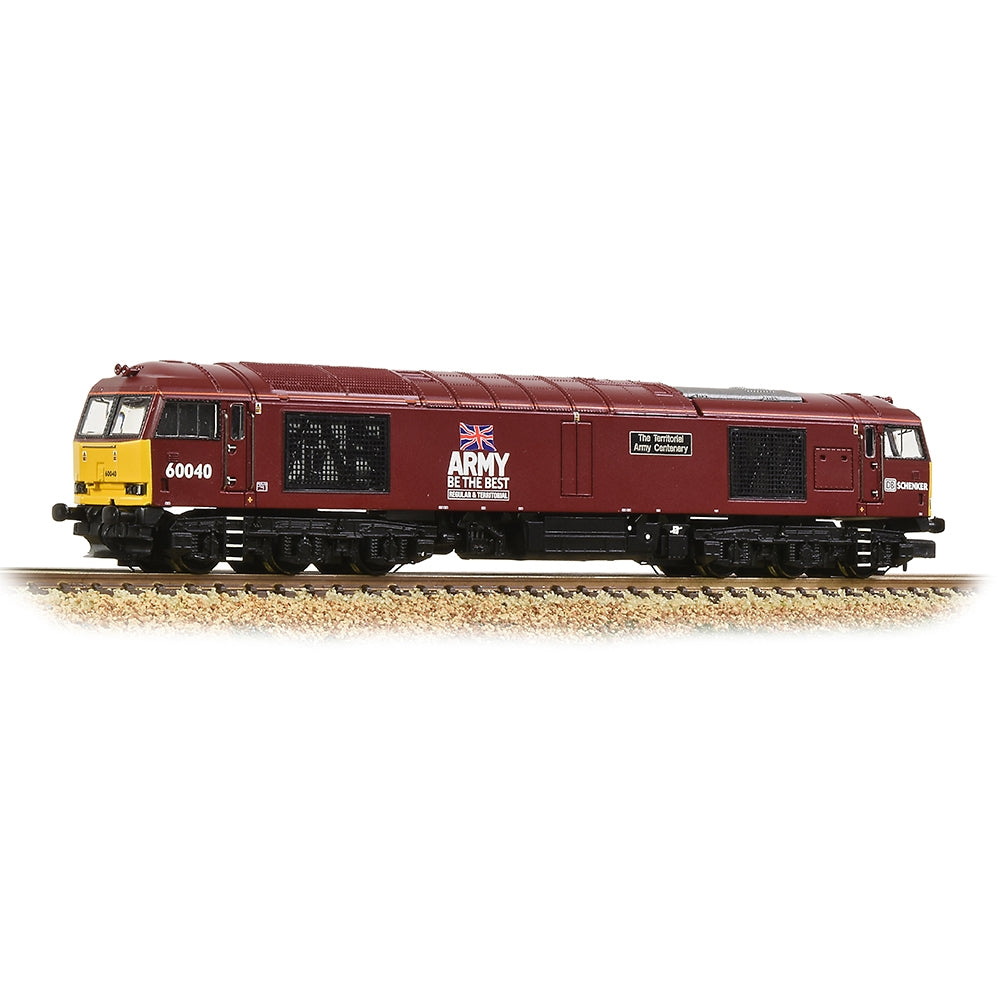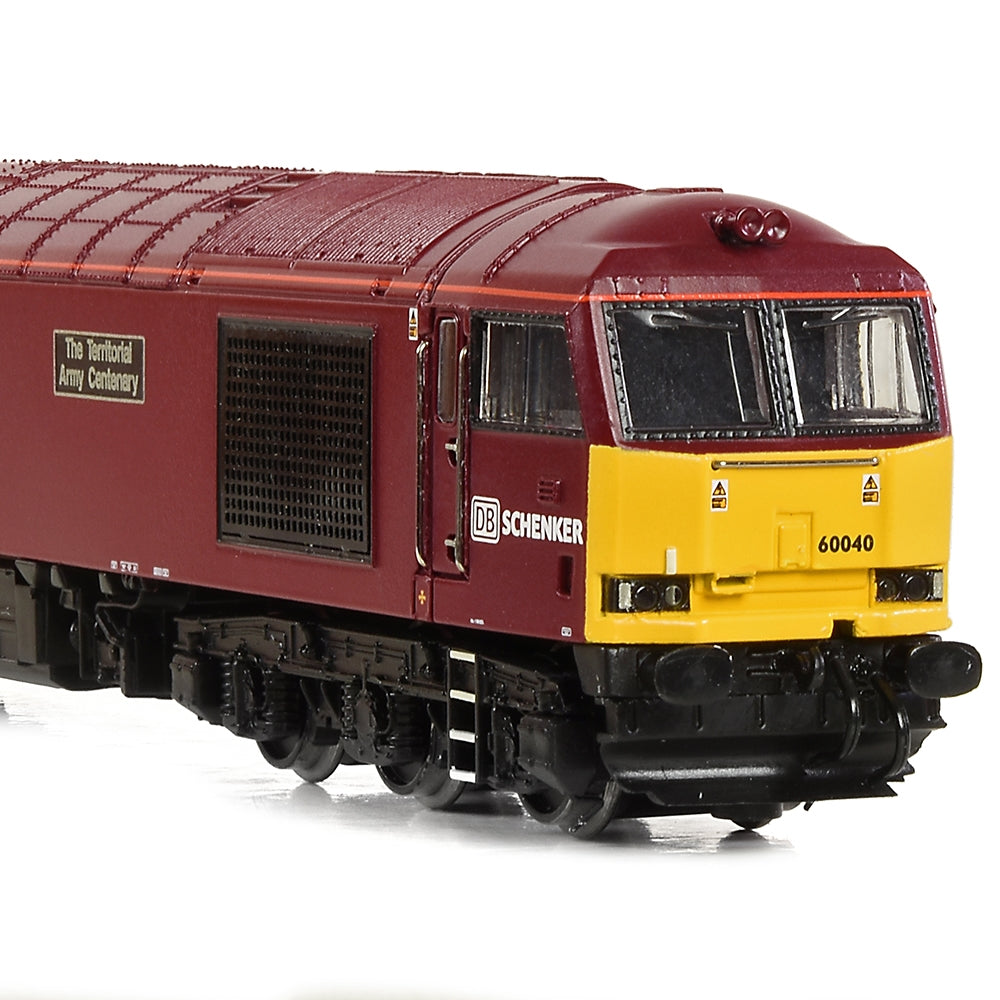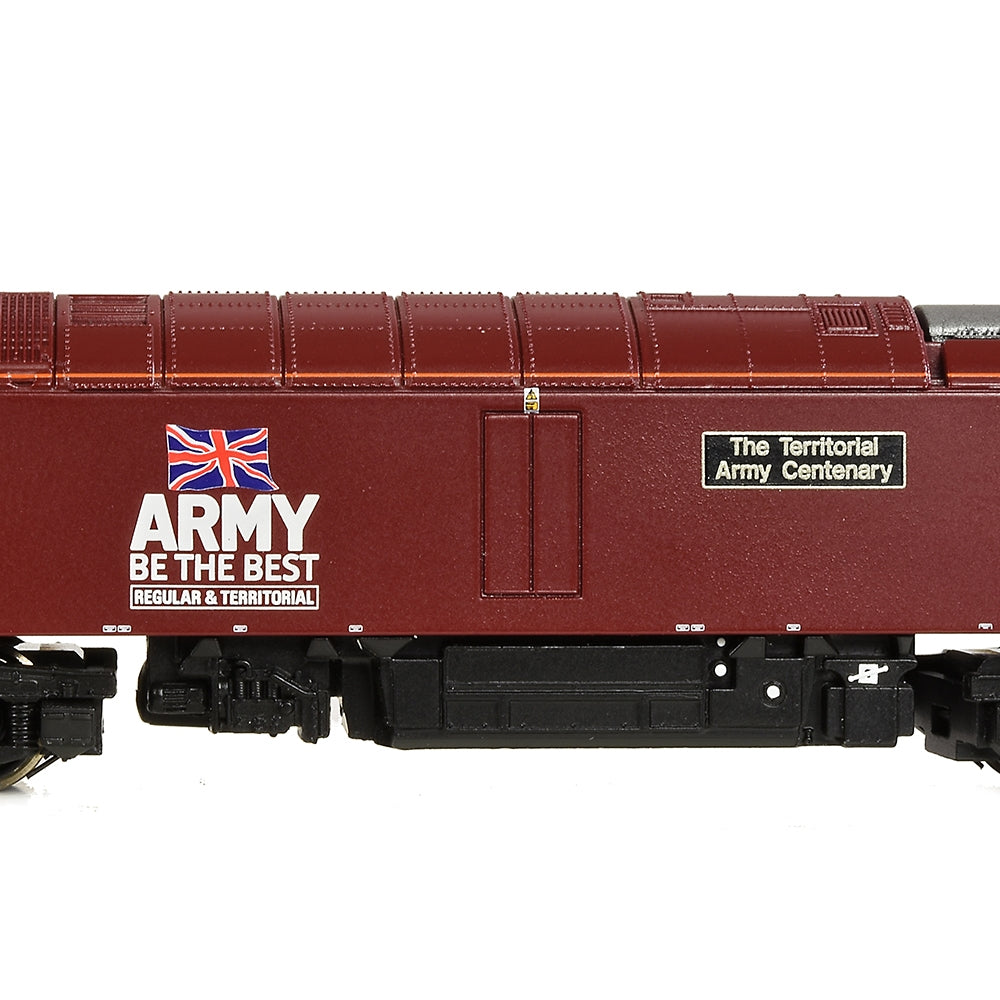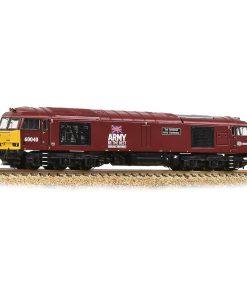GRAHAM FARISH N Class 60 60040 ‘The Territorial Army Centenary’ DB Schenker/Army Red GRAHAM FARISH
$ 233,99 $ 93,60
GRAHAM FARISH N CLASS 60 60040 ‘THE TERRITORIAL ARMY CENTENARY’ DB SCHENKER/ARMY RED
Announced as part of the Summer 2022 British Railway Announcements, Bachmann are delighted to unveil the Graham Farish Class 60 with its new upgraded chassis, which incorporates a Next18 DCC decoder socket and pre-fitted speaker, in DB Schenker/Army Red livery as No. 60040 ‘The Territorial Army Centenary’.
Capturing the strong, angular looks of the Class 60 to a tee, the highly detailed Graham Farish model has been treated to a new chassis which incorporates a Next18 DCC decoder socket and speaker. Not only have we added the possibility of sound, but the lighting features have been upgraded too, and now include directional head- and tail-lights which can be switched on/off at each end independently – on DCC or via the PCB-mounted microswitches when used on analogue – and, when used on DCC, cab lights which can also be turned on/off independently of each other via two separate DCC functions. The icing on the cake is the sublime livery application, replicating this one-off locomotive in its special livery marking the centenary of the Territorial Army. For the ultimate experience, why not consider our SOUND FITTED version of this model instead!
MODEL FEATURES:
- Graham Farish N Scale
- Era 9
- Pristine DB Schenker/Army Red livery
- Running No. 60040
- Named ‘The Territorial Army Centenary’
- Accessory pack
- NEM Coupling Pockets
- Powerful Coreless Motor
- Directional lighting, switchable on/off at either end on DCC or Analogue control
- Cab lighting*, assigned to two DCC functions for separate switching of each (*when used on DCC)
- Speaker Fitted
- Equipped with a Next18 DCC Decoder Socket – Recommend Decoder item No. 36-567A
- Length 144mm
CLASS 60 HISTORY
The British Rail Class 60 is a Class of Diesel-Electric Locomotive built by Brush Traction in Loughborough, Leicestershire between 1989 and 1993. Affectionately known as ‘Tugs’ by enthusiasts due to their Mirrlees marine-derived powerplant, 100 locomotives were built and the first entered service in late-1990 – more than a year after the first example had been ceremoniously handed over to BR – after various technical issues were uncovered during testing of the first locos. Designed for heavy freight trains, the Class 60s entered service at a time when BR’s Railfreight operations had been split into various sub-sectors and locomotives were assigned to the Coal, Metals, Construction and Petroleum divisions of BR Railfreight, with each carrying the triple-grey base livery with the addition of the relevant graphics for the sub-sector and depot plaques.
In 1994 and in the runup to the Privatisation of British Rail, the Class 60 fleet was split between three of the shadow freight operators – Loadhaul, Mainline and Transrail – that had been created to handle BR’s freight business. All three operators were purchased by EWS in 1996, resulting in the entire class falling under EWS ownership. With the introduction of the Class 66s at the end of the century and coupled with a decline in EWS heavy freight traffic, several Class 60s were put into store and the future of the fleet was uncertain at times. However, a number of locomotives were retained as the heaviest trains could not be hauled by a single Class 66 and instead required the superior power of a Class 60. EWS was acquired by DB Schenker in 2007 (later renamed DB Cargo) and the new owners put several Class 60s up for sale, however they also announced overhauls for some 60s, giving the class glimmers of hopes for the future.
In 2014 Colas Rail purchased ten Class 60s and these remained with the company until 2018 when they were replaced by Class 70s. These ten Class 60s were subsequently sold to GB Railfreight who still operate the fleet which includes No. 60002 that was named ‘Graham Farish – 50th Anniversary 1970 – 2020’ to mark 50th anniversary of production of British N scale models by the brand which is now owned by Bachmann Europe.
Despite their ups and downs, the Class 60s continue to serve DB Cargo, GB Railfreight and other private operators including DC Rail and the class remains a popular sight across the UK where they can be found hauling the heavy freight trains for which they were originally designed.
Quick Shipping and Professional Packaging
Due to our long-term partnership in a long-standing partnership with UPS, FedEx, DHL and many other leading global carriers, we are able to offer an array of shipping options. Our warehouse staff are highly trained and will pack your products according to our precise and precise specifications. Your items will undergo a thorough inspection and be securely secured prior to being delivered. We ship to thousands clients each day across multiple countries. This is an indication of our dedication to being the biggest online retailer in the world. The warehouses are located in Europe as much as they are in the USA.
Note: Orders that include more than one item are assigned a processing time in accordance with the item.
Prior to shipment before shipping, we'll inspect thoroughly the items you've ordered. The majority of orders are shipped within 48 hrs. The time to deliver varies from 3-7 days.
Returns
We don't manage the stock in our warehouse and factory. Stocks are subject to change at any moment. You may not receive your order after the order has been made.
Our policy is for 30 days. If you have passed 30 days by since your purchase, unfortunately we can't offer you a refund or exchange.
The item cannot be used and in its original condition. It should also be in the original packaging.
Related products
RADIO CONTROL
RADIO CONTROL
RADIO CONTROL
RADIO CONTROL
RADIO CONTROL
(Clearance Item) HB RACING 5 Cell Main Chassis 2.5mm with Battery Tray (Cyclone) HB RACING
RADIO CONTROL
RADIO CONTROL
(Clearance Item) HB RACING 44mm Heavy Duty Universal Drive Shaft/Rear/Steel/2Pcs HB RACING
RADIO CONTROL
RADIO CONTROL
RADIO CONTROL







































